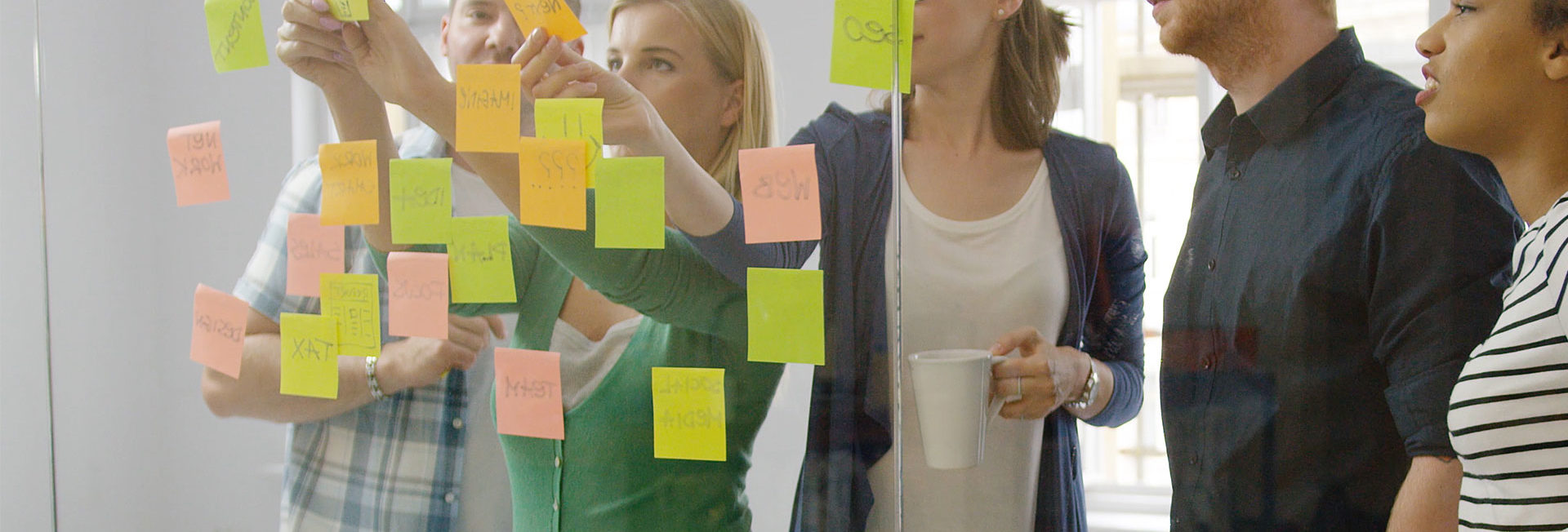Creating ‘Safe-to-Fail Spaces’ Part 1 – Relationships
by Susanne Schuler
Creativity and innovation rely on people feeling encouraged and able to make mistakes without fear of retribution, exclusion or ridicule.
In this two-part blog series, we will look at two key components to creating ‘Safe-to-Fail’ environments: relationships and process.
This blog will look at the relationship element to creating these environments.
Why are ‘Safe-to-Fail’ Spaces so Important?
How many times have you had an idea and you haven’t aired it, most likely for fear of embarrassment?
The chances are it has happened at least once, if not more.
Times that by the number of people in your team, your department and your organisation and suddenly there are a lot of ideas that have never seen the light of day.
Not all ideas will be good, in fact, a lot may be ‘rubbish’. However, it is often necessary to work through ‘rubbish’ ideas in order to get to the chosen one – that is creativity and innovation in action.
People will only bring forward ideas when they trust the people they work with and the process they work in.
What is the Problem?
“While organizations grow, so does our tendency to shy away from conflict ─ afraid of the influence of silos. In surveys of European and American executives, 85% of them acknowledged that they had issues or concerns at work that they were afraid to raise. Afraid of the conflict that would provoke. Afraid to get embroiled in arguments that they did not know how to manage and felt that they were bound to lose.” – Margaret Heffernan
When coaching teams and senior leaders, we often get asked about the importance of trust or lack thereof as a barrier to creativity and source of conflict.
Both groups (team members and leaders), when asking about the same issue, have different concerns in mind.
When members of staff ask this question, they usually want to learn how to disagree effectively with their leaders without being perceived as aggressive and disruptive or doing anything to harm their progression.
When managers and senior leaders ask us about the importance of trust, they are usually concerned about how to how to unlock the creative and collaborative potential of their team members.
How to Create Trust?
Significant research has been done on trust and in addition to our experience as conflict coaches, we find there are three pillars of, or three prerequisites to building trust within a team.
- Ability – the actual or perceived capability and competence to build trust
- Benevolence – the extent to which a person is believed to voluntarily do good to the other
- Integrity – the perception that a person adheres to a set of principles considered acceptable by the other and acts consistently and accordingly to those.
These are known as ‘ABI’.
Implementing ABI relies heavily on strong relationship or interpersonal skills.
From the Perspective of the Team
How does ABI help a group of staff members who wish their managers would be more open and trusting?
They could apply ability, benevolence and integrity to their managers rather than only expecting it from them.
When we communicate a message, we almost always disclose information about ourselves.
For example, when shouting at someone, we might demonstrate anger, frustration or fear about an issue, which doesn’t necessarily have anything to do with whom we are communicating the message.
As the receiver, you have the choice to listen differently (actively) and to reflect back on what your perceived and to come from a place of curiosity and benevolence in order to understand what the sender of the message is really communicating to you.
From the Perspective of the Manager
On the other hand, what could managers learn from ABI in order to (re-)build trust with team members?
For less empowered team members, receiving commands and task requests keeps their lives simple and ensures the responsibility for innovation rests solely with the leader.
Some managers prefer this system as it protects their privacy. They are able to shield themselves from people knowing about their private lives, their past and their mistakes in the workplace.
One of the main blockers to innovation is that businesses can’t leverage organisation-wide knowledge, nor are they able to think together. This is often out of a fear to share or to dare to disagree.
It is because of that, even if you bring the best minds together, we fail to bring the best out of our colleagues.
In addition, there is the false assumption that if you have clear processes, you can bring anyone into a role and it be successful.
This means missing out on the important element of ‘people’ and relationships.
According to Dan Pink,
“People are spending about 40 per cent of their time on moving other people, persuading, influencing, convincing, cajoling people, making this very sales-like exchange. The denomination isn’t dollars, but it’s time, effort, attention, commitment, zeal, energy – many kinds of intangible things.”
When you (as a manager/leader) start thinking differently about how people work together, and what makes them really productive, you will unleash a space for innovation.
From a managerial perspective, here is an example of ABI in practice.
At an international company in Central Europe, a new manager from the UK needed to connect with and inspire his sales force.
They were all nationals of where the company was located and unsure about the new manager and ultimately didn’t trust him. This led to them dreading sales meetings where they were afraid to present their real figures and shares ideas and problems for fear of seeming weak or unsuccessful.
To counter this, in one meeting, the manager spent the first hour detailing all the mistakes he made in his career and by the end, there was a real shift in their attitude towards him.
He showed positive vulnerability and in doing so created an atmosphere where ‘failure’ was accepted and used as a force to move forward.
As Margaret Heffernan ends her powerful TED talk about effective collaboration – “Dare to disagree. Openness isn’t the end; it is the beginning.”




